Review: MY FAIR LADY at the Lincoln Centre, New York
One of the most anticipated openings of the current Broadway Season is director Bartlett Sher's revival of MY FAIR LADY at the Lincoln Centre where he’s recently staged world class productions of SOUTH PACIFIC and THE KING AND I (to be revived soon at the London Palladium)
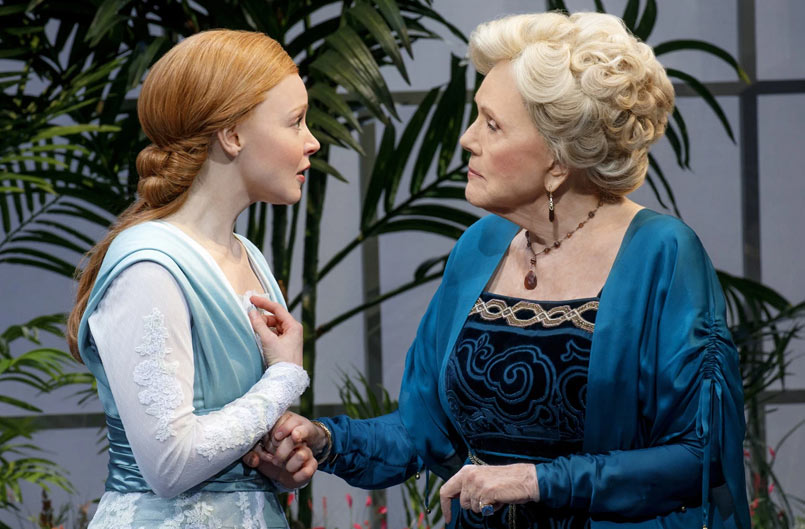 Lauren Ambrose and Diana Rigg in a scene from "My Fair Lady." Photo Joan Marcus
Lauren Ambrose and Diana Rigg in a scene from "My Fair Lady." Photo Joan Marcus
There’s been quite a build up with movie stars Colin Firth and Anne Hathaway first rumoured to be taking the lead roles. That never happened and instead middle-ranking British actor Harry Hadden-Paton plays Henry Higgins, the Edwardian speech therapist, with SIX FEET UNDER star Lauren Ambrose as Eliza, the flower girl he teaches to act like a lady.
There were quite a few raised eyebrows at this unusual choice of leading players, neither of whom have ever appeared in a Broadway Musical. No one need have worried though, they are exceptional, both bringing beautiful, nuanced and unexpected touches to their interpretations. In fact the whole production is a tasteful and exquisite reimagining of this old show that is entirely respectful of the original, which so many people, including myself, love so much.
It is being particularly scrutinised as it’s presented at a time when men bullying women in any form has become unacceptable as a consequence of the MeToo movement. Traditionally Professor Higgins is shown to truly boss and humiliate Eliza as he helps her achieve their goals. This production overcomes potential audience discomfort at this by suggesting that Higgins is falling under Eliza’s spell just as surely as she is moulding herself to become the woman he wants her to be. Unusually, in this production, both are around the same age which makes a romance between them seem more likely, even desirable, than when Higgins is played by a much older man. You pretty soon get a sense that she could break his heart.
The comedy elements of the show are all in place too. Norbert Leo Butts, a big Broadway star, plays Eliza‘s father, the Dustman, Alfred P Doolittle . Often this character is portrayed as something of a loveable rogue. On this occasion he’s slyer, more calculating than usual and the production does not stint on hinting at his inner darkness. In the seminal number Get me to the Church on Time, instead of a random collection of street people singing and dancing indiscriminately we get a scene in a music Hall. As usual Doolittle is attracting lots of friends, high spirits and attention but costume colours are darker then usual, Butts is resplendent in a fur-collared black coat like a sleek business man, and it’s very clear that he’s cynically buying all the good wishes with the cash he’s scattering to the grasping hangers-on.
Sets and costumes at this top-class venue are, as you’d expect, sumptuous, plentiful and beautifully designed. I loved the way that the entire stage is sometimes wiped clean of scenery so that, for instance, we can enjoy the breathtaking sight of Professor Higgins’ beautiful wood-panelled and gas-lit library sliding into view towards us from the back of the huge stage. This truck is also capable of revolving at an exhilarating speed through the downstairs rooms as the stakes grow higher in ensuing scenes. It’’s beautiful work from set designer Michael Yeargun.
For directors of the stage show one of the big challenges is that you’re not allowed to cut the short pieces of action that were inserted in the original production to cover scene changes and which usually slow up more modern versions. But Sher makes an asset of them by isolating individual characters at the front of the stage whilst scenery whirls around them, mirroring the shifts in mind-set that are also happening.
There is also a wonderful and unexpected use of silences. One particularly poignant example of this is at the end of a magnificent scene in which Eliza has triumphed at the Embassy Ball (the entire orchestra slides on to accompany the dancing) but as all the opulence is swept away again she’s left alone to collect her coat and find a taxi. This moment is played in complete silence and it’s a heartbreaking reminder of how alone and lonely she is.
Eliza Dolittles tend to fall into two categories; ones who are most adept at playing the scruffy flower girl at the beginning of the story and the ones who really shine when Eliza becomes a grand lady. Loran Ambrose. it must be said, is best in the early scenes. She hasn’t quite mastered an upper-class English accent but she’s not far off and I hope she keeps working on it so that when this magnificent production transfers to London the producers won’t feel obliged to put in a British star. Accent aside she is terrific. Her Act One Eliza is like some filthy feral cat, head jutting forward, eyes burning brightly in search of the next opportunity of the next danger. By the end of the show she is elegance personified with a heart-stopping inner beauty.
MY FAIR LADY traditionally ends with Eliza succumbing to Higgins’ mastery and passing him his slippers. In response to modern sensibilities Sher has cut this moment. Instead Eliza walks confidently out through the audience. However we have so utterly fallen in love with the charming, childish, flighty, passionate Henry Higgins as played by Hadden-Patton that there is no doubt in our minds that he should and will follow her and that they will team up for ever. When the performers enter hand in hand to take their bows it’s as if we’ve won this moment by willing them to recognise their potential as a couple.
The directing is revelatory, the acting is top notch, the music is glorious and the visuals are stunning, in fact seeing this production was one of my top 10 best ever theatre going experiences.
I’d even go so far as to suggest it’s worth flying over to New York just to see it.
Latest News
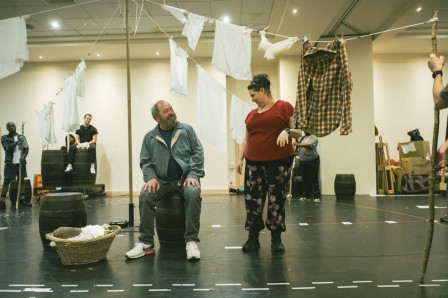
 The Unlikely Pilgrimage of Harold Fry at Theatre Royal Haymarket - Rehearsal images released
16 January 2026 at 15:41
The Unlikely Pilgrimage of Harold Fry at Theatre Royal Haymarket - Rehearsal images released
16 January 2026 at 15:41
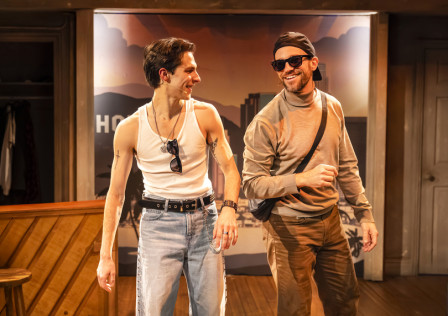
 Already Perfect at King's Head Theatre review
16 January 2026 at 10:25
Already Perfect at King's Head Theatre review
16 January 2026 at 10:25
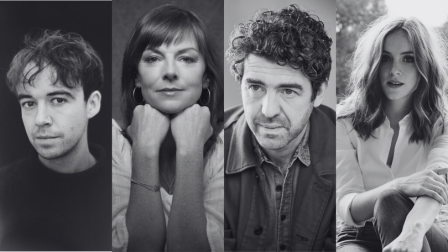
 Cast announced for Summerfolk at National Theatre
16 January 2026 at 10:03
Cast announced for Summerfolk at National Theatre
16 January 2026 at 10:03
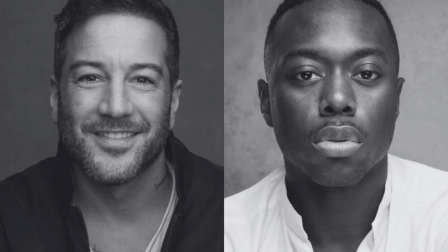
 Matt Cardle to star in West End production of Kinky Boots at the London Coliseum
16 January 2026 at 10:02
Matt Cardle to star in West End production of Kinky Boots at the London Coliseum
16 January 2026 at 10:02
